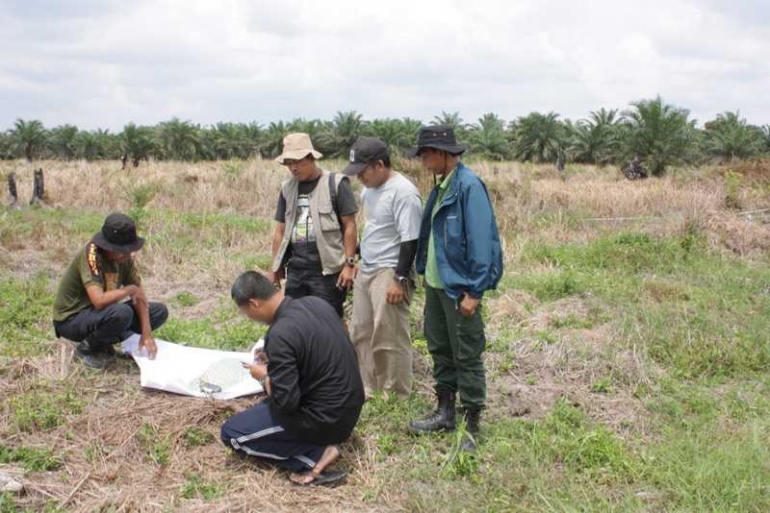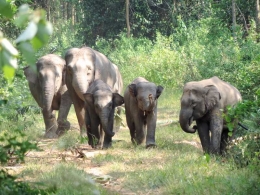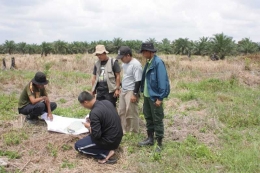The biggest issues Sumatran elephant are overlap with community activities. In many places in Sumatra, 80-90% of Sumatran elephant habitat has been co-opted by the natural resource companies and the community, so human-elephant conflict is inevitable and into access groups for the purpose of ivory poaching. Balai Raja - Riau Province is an elephant habitat area since past. Massive forest clearing occurred and resulted in almost the entire forest as the elephant habitat lost by oil fields, gardens and settlements (forest remaining about 150 ha only).
Conflicts occur nearly every day with the elephants and cause loss of life on both sides. Balai Raja picture is representative of the many places in Sumatra are currently degraded natural forests and wildlife, especially elephants conflicts with the community. This conflict caused by the elephants entered into settlements, community gardens or go into a residential complex of oil and raised the people's resistance to the elephants.
This resistance can cause the elephants or humans were injured or died. The term conflict also occurs when the elephants go to the community garden and orchard damage or destroy your home or farm. If the estimate, the loss of the community is great if done in groups and destroy the gardens or fields at large, or small losses because only eat specific plants.
Conflict mitigation
Many ways people do to reduce conflict. The use of elephant trenches, electric fencing (wire with shock currents), using chili (chili fencing), use domesticated elephants to repel and convoy the wild elephant (such as the flying squad in Riau), or cannon carbide or firewall.
This practical techniques were used by companies and the communities across Sumatra. There is also the way an elephant relocation to a safe location, but this technique was abandoned because of the risk of the wild elephant deaths and no more locations to place safely except domesticated elephants. The bottom line is forcing elephant conflict mitigation breakaway on people's lives and reduce human losses. This elephant is generally used as a pest, like a wild boar or other pests.Elephant trench called static physical barrier, electric fencing or chili as psychology barrier fencing is static, carbide canon or firewall and use of domesticated elephants are the dynamically psychology barrier.
Throughout this manner in few specific places indeed reduce conflict. But the drawback of this technique are many, such as elephants trench and electric fencing maintenance is expensive and must be able to maintain the discipline of this thing. Chile fencing is cheap and does not need to be maintained in detail, but not necessarily effective because of rain fade chili materials or based on research literature that this technique can not be used for Sumatran elephants.
Holistic VS Anthropocentric
Human - elephant conflict mitigation techniques can be said as a form of human anthropocentric against elephants. An approach to elephant is how the elephants can organize his life to the people so that the conflict is reduced. Like the elephant asked to stop at a red light and when the green light, they have to walk, but elephants do not know the rules or will not agree to the rules of man-made unilaterally.How such a holistic way? That is the approach of win-win solution (elephants or humans do not feel defeated), aligned to both, humans also need to set yourself and not just elephants that in fact the ancestors on the land.

Coexistence





